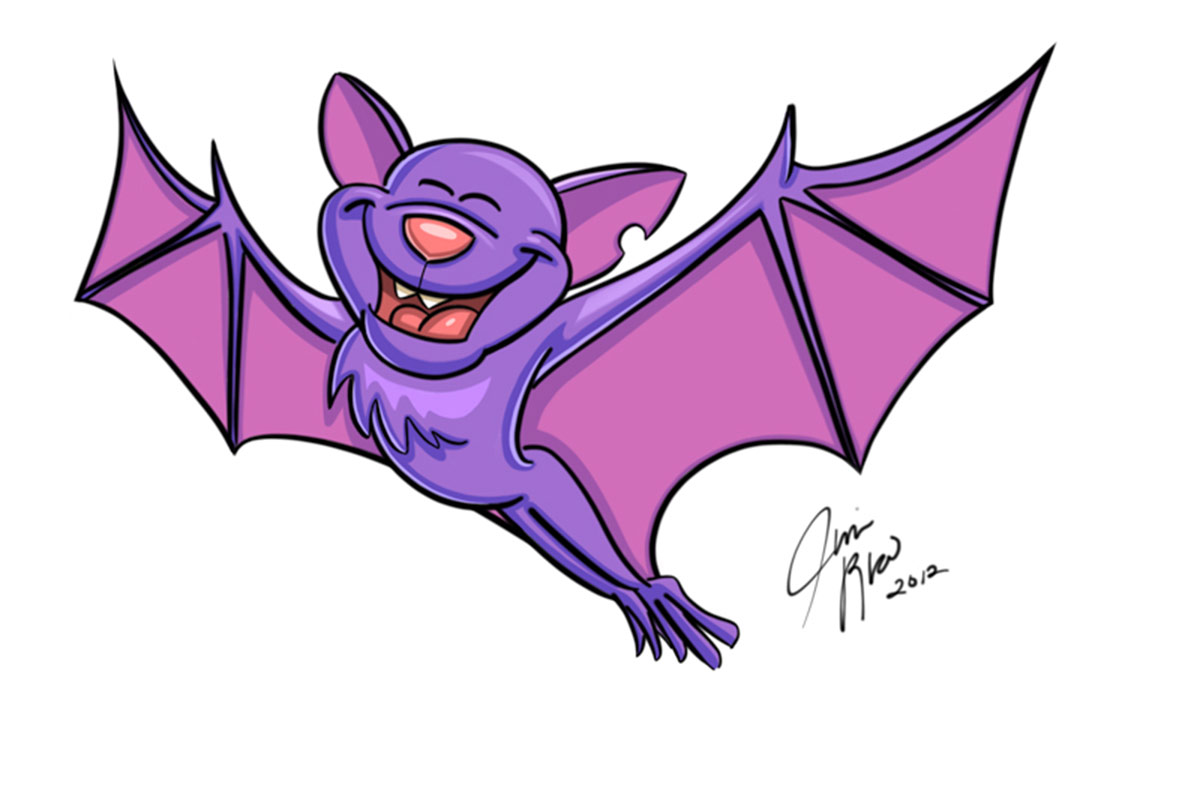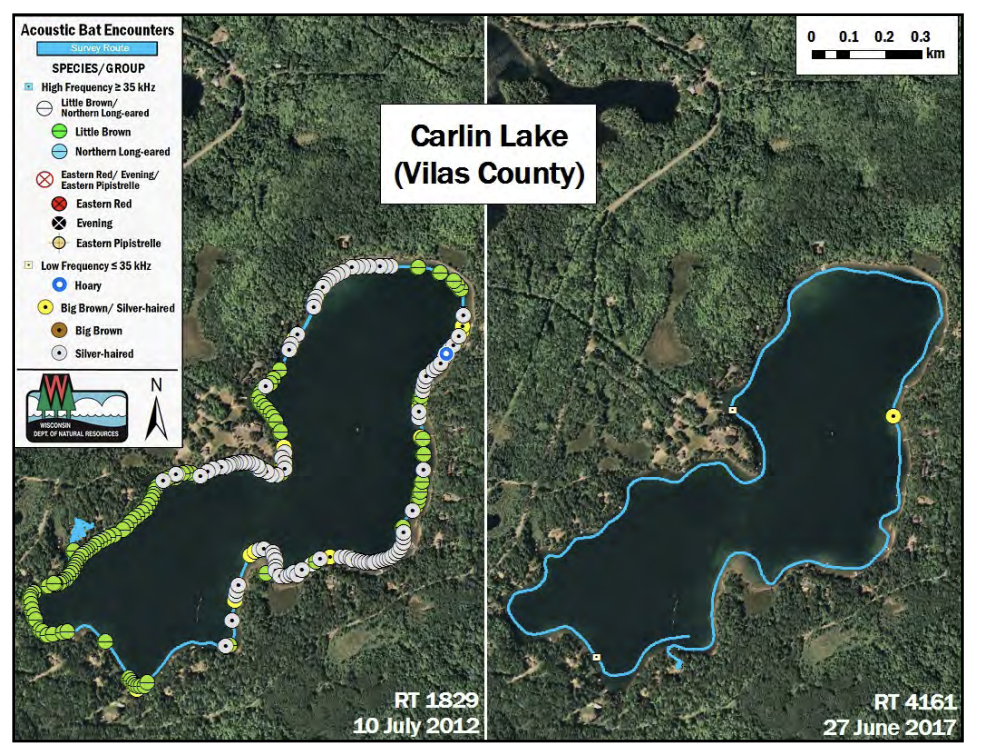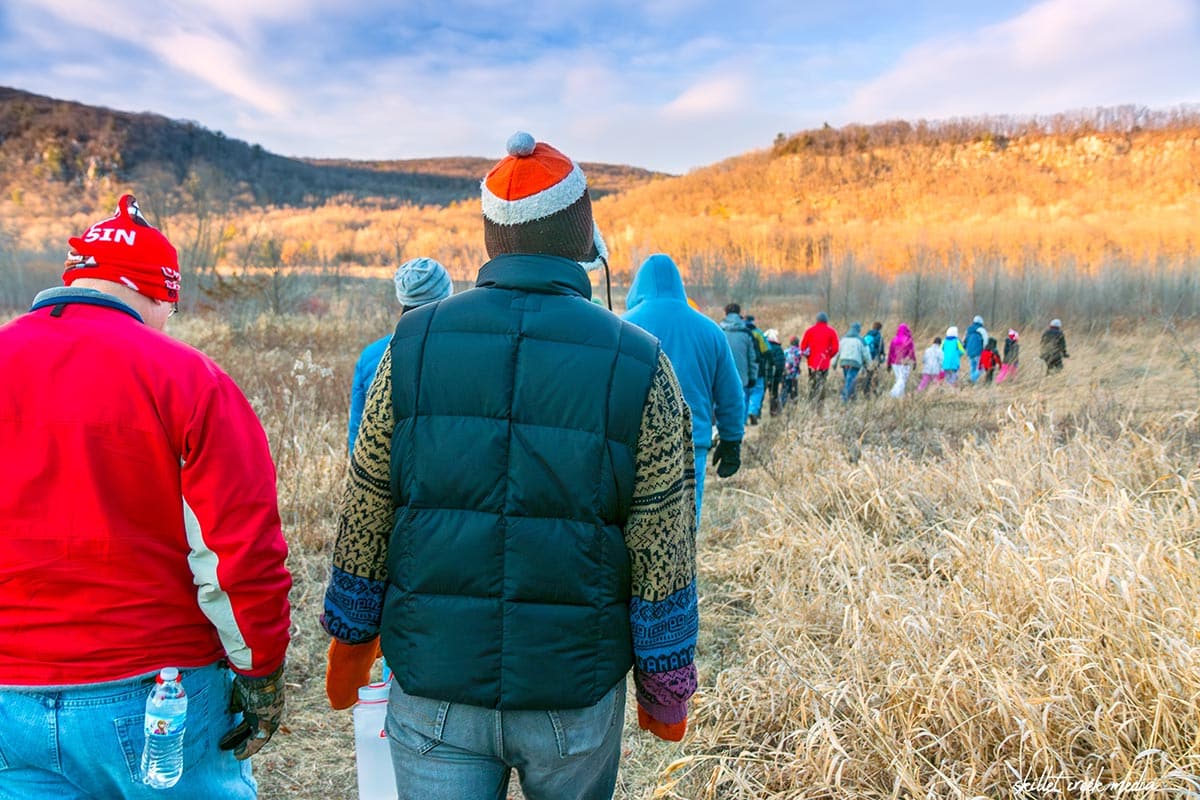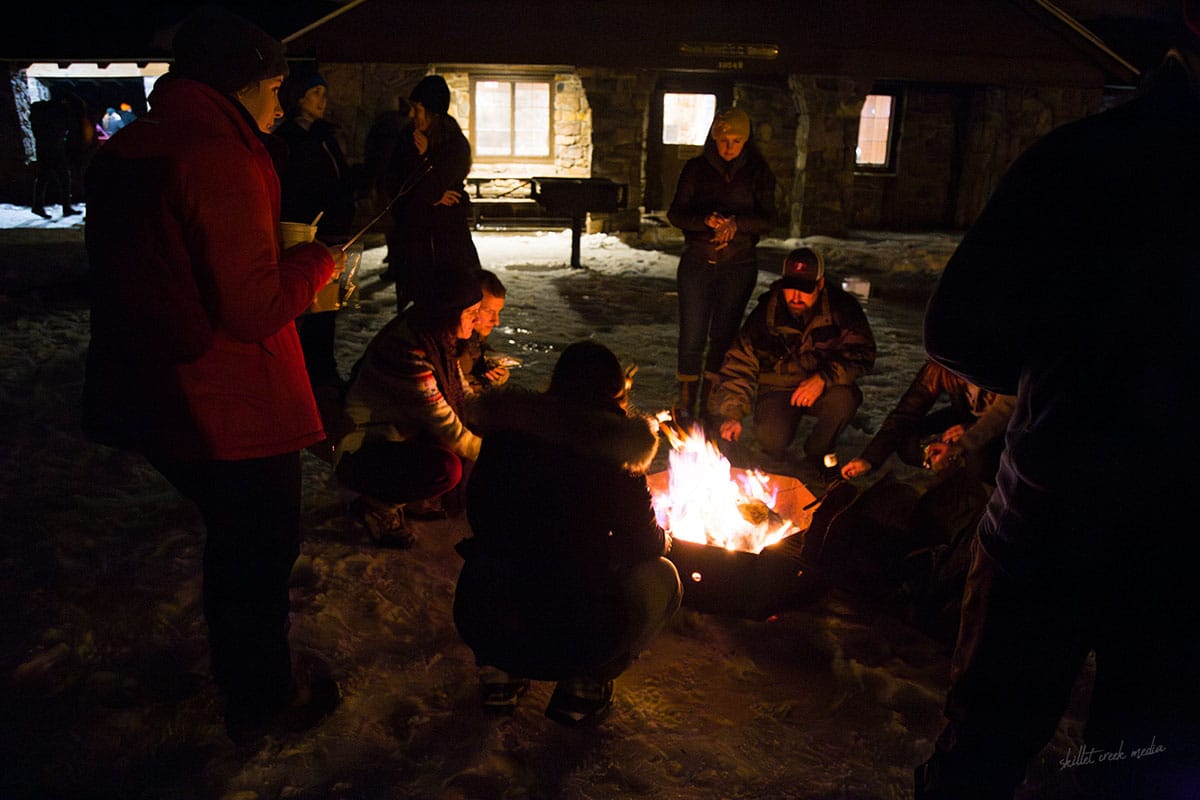This year at Devil’s Lake, the annual First Day hike will be a twilight hike/snowshoe…

Thursday, June 27th at 8:45 pm, bring a comfy lawn chair to Devil’s Lake State Park and watch the bats! Join the naturalist by the bat condo to watch the bats emerge to hunt for the evening. For kids, there’ll be a fun bat scavenger hunt while we wait. This is also your opportunity to see how our local bats are doing in the face of the deadly white-nose syndrome.

Thursday Night Bat Watch
Bring a comfy lawn chair and watch the bats! We’ll park our chairs by the bat condo to watch the bats emerge from the bat condo. We’ll have fun bat information and a bat scavenger hunt for the kids to do while they wait to the bats to emerge. This program is great for all ages. Meet at the Bat Condo near the North Shore Boat Launch at Devil’s Lake State Park. Thursday, June 27 Starting at 8:45 pm.
White-Nose Syndrome
In 2007, a fungus was discovered growing on hibernating bats in a cave in New York. The fungus, later named Pseudogymnoascus destructans, was found to cause the disease white-nose syndrome (WNS). The fungus grows best in the cool conditions of caves and mines, and WNS affects bats as they hibernate. WNS can cause mortality rates of up to 95% in infected sites. – Wisconsin Bat Program
White-Nose & Devil’s Lake
Because of the disease, white-nose syndrome, the population of bats in the bat houses and bat condo has dropped from hundreds of bats down to less than a hundred. In 2017 we counted 18 in the bat condo! In 2018 the population went back up to around 100. One thought is that with fewer bats across the state, those that survive are gathering together creating growth in some populations while others populations disappear. But there is so much yet to learn.
Researchers have been giving our local bats regular check-ups as well as identifying, measuring and tagged the bats over the last few years. Each spring we can see from the tagging efforts that some of them have survived and returned! Some good news for sure! Still, the numbers seem to be quite low this year as well.
White-Nose in Wisconsin
Wisconsin, now in its fifth year of infection, has seen severe declines in cave bat species with population losses ranging from 70 to 100 percent. At Wisconsin’s original infection point in Grant County, the disease has decreased a once thriving hibernating bat population by 98.4 percent overall compared to the pre-WNS average population. – Wisconsin Bat Program, Feb 2018

What Can You Do?
Frankly, there is not much good news out there, however, if we all work together we can make a difference. Here’s how you can help..
- Set aside a Saturday morning before May to build or buy a bat house and put it up on your house or property.
- Suggest and work with your local parks committee or school shop class to build and place bat houses in your community.
- Reach out to get your name on the Wisconsin Bat Program’s volunteer list so that you can receive action alerts for the Great Wisconsin Bat Count or become an acoustic volunteer, etc.
- Buy an Endangered Resources license plate, which adds a $25 annual donation to your registration fee for rare and endangered wildlife and plants, or donate directly to one of the bat funds.
- Learn just one amazing bat fact and then share it with family and friends! Caring about bats and all wildlife can have a huge impact simply because we will all be motivated to act, speak up and to make a difference.

For nearly 2 decades the Skillet Creek blog has focused on 3 main goals; To inspire you to visit and explore the Devil’s Lake region, to help you get the most your visit by sharing tips, events, and other helpful information. Lastly to advocate for our environment & wildlife and talk about how we can keep our natural areas amazing now and into the future! That last goal can sometimes cause controversy, but it’s the only way we can accomplish the first two. – Derrick Mayoleth, Owner.






